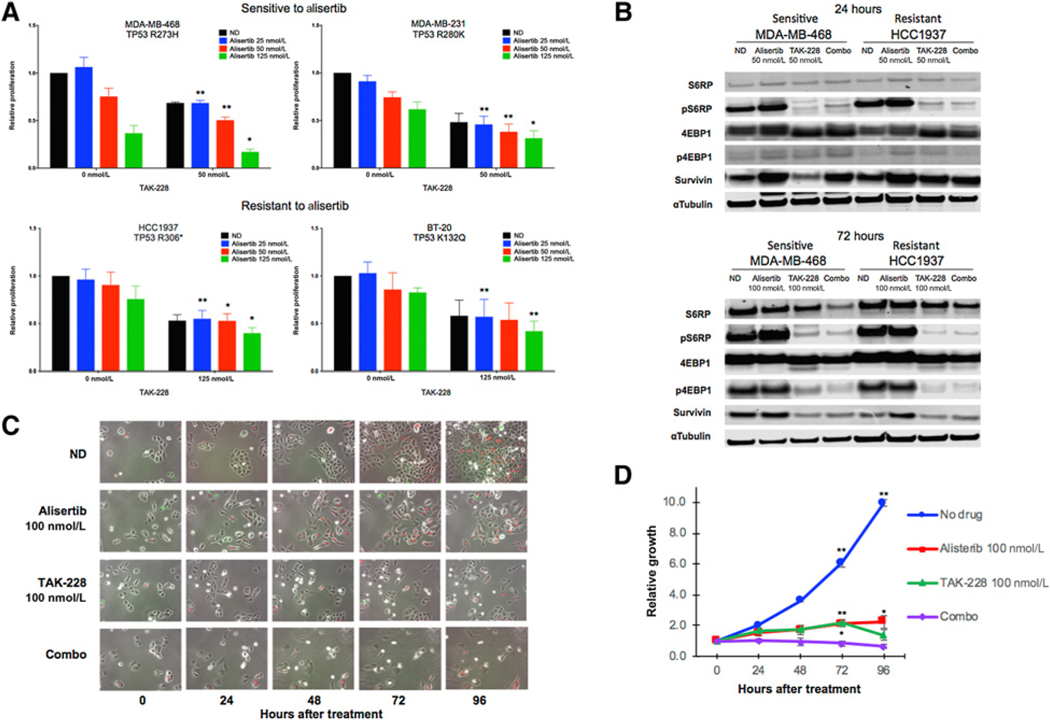Figure 1.
Effect of alisertib and TAK-228 on proliferation, downstream effectors, and cell-cycle arrest in TNBC cell lines. A, Relative proliferation as compared with vehicle control cells according to CellTiter-Glo at 96 hours with increasing concentrations of alisertib alone and in combination with TAK-228 at 50 nmol/L (alisertib-sensitive cell lines) and 125 nmol/L (alisertib-resistant cell lines). Degree of statistical significance as compared with single-agent alisertib: *, P ≤ 0.05; **, P ≤ 0.01. B, Immunoblots showing effects of alisertib and TAK-228 on apoptosis and downstream effectors of mTOR at doses of 50 nmol/L at 24 hours and 100 nmol/L at 72 hours. C, CAL51 cells transduced with the FUCCI system treated with alisertib and TAK-228 alone and in combination at 100 nmol/L and observed over 96 hours using an environmentally controlled Olympus IX81 fluorescence microscope. Cells appear red in G1 phase, indicating arrest, and green in S/G2–M phase. D, Growth curves based on time-lapse images over 96 hours for CAL51 FUCCI cells. Degree of statistical significance of combination therapy as compared with single-agent treatment arms at 72 and 96 hours: *, P ≤ 0.05; **, P ≤ 0.01.

